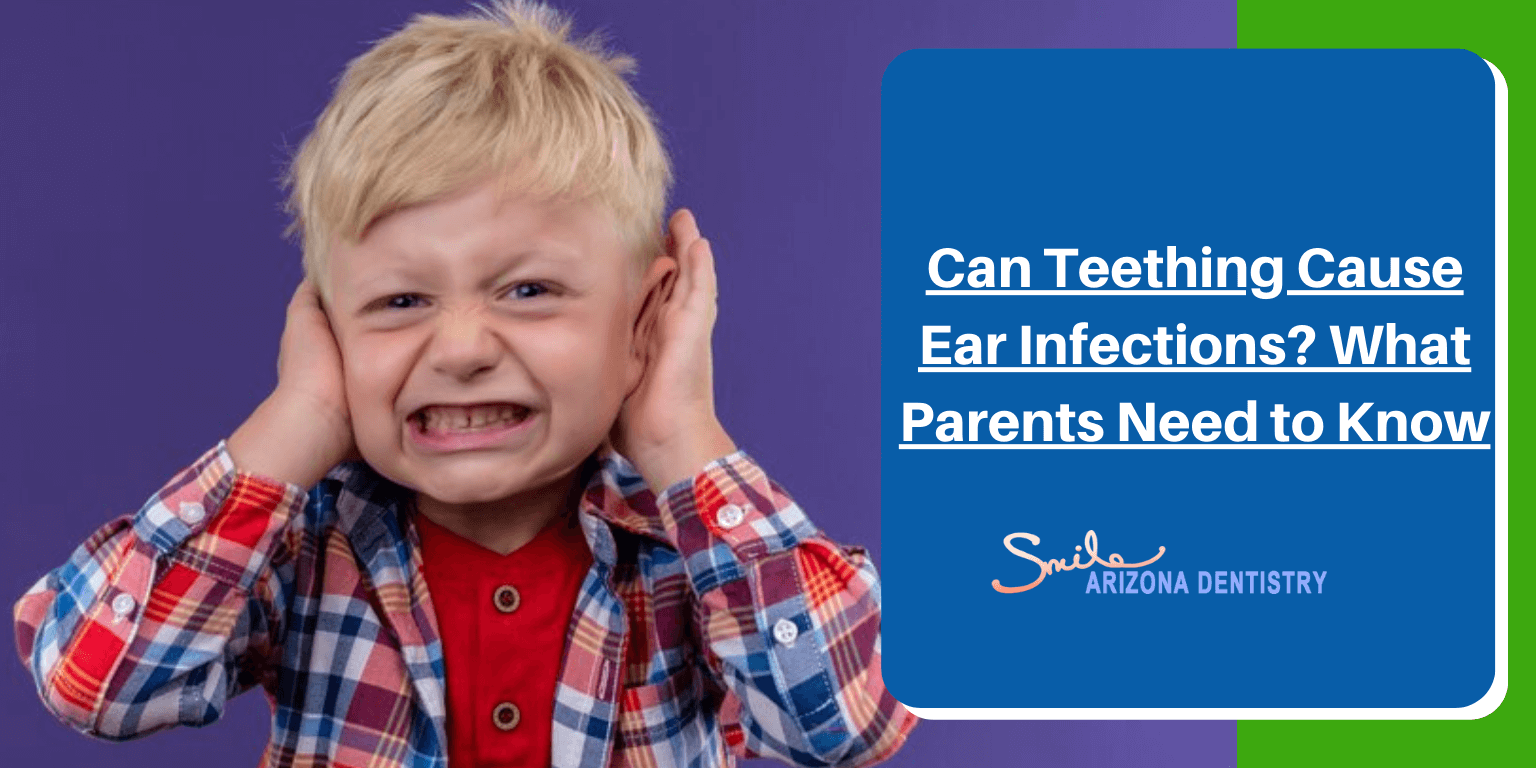


Teething is one of the most common milestones of babyhood, and while it is an exciting time for parents, it often comes with confusion and concern. For many parents, it can be challenging to differentiate between the discomfort caused by teething symptoms and the signs of a more serious condition, such as an ear infection. This confusion is widespread when babies tug at their ears, a behavior often associated with teething.
The big question is whether teething can cause an ear infection or if these symptoms are simply easily mistaken. Many parents are left wondering if there’s any connection between these two conditions or if their baby might be dealing with something more serious than just teething discomfort.
Let’s clarify the confusion and help you understand the differences between teething and ear infections, how to identify each, and how to ensure your baby is comfortable and healthy.
Teething typically begins when a baby is around 6 months old, though it can vary. The process is marked by the eruption of the baby’s first set of teeth, which often causes gum irritation and discomfort. Common signs of teething include drooling, fussiness, chewing on objects, and swollen or tender gums. Babies may also tug at their ears or rub their faces as they try to soothe the discomfort.
Ear tugging during teething is linked to the proximity of the teething gums to the ears. The discomfort in the gums can cause pain in the ear area, which is why babies often seem to pull or rub their ears during this time. However, this does not necessarily mean they are experiencing an ear infection.
Ear infections are common in babies. They occur when bacteria or viruses cause fluid to build up in the middle ear. This fluid can become infected, leading to swelling, discomfort, and sometimes fever. The most common causes of ear infections include colds, upper respiratory infections, and bacterial infections.
Key symptoms of ear infections differ from teething symptoms. In addition to ear pulling, babies with ear infections may experience:
These symptoms often signal an infection and require medical attention, unlike teething, which typically does not cause fever or fluid drainage from the ear.
While both teething symptoms and ear infections can cause discomfort similarly, the key difference lies in the associated symptoms. Teething typically causes mild discomfort like gum swelling and drooling, while ear infections usually come with fever, loss of appetite, and drainage from the ear.
If your baby is pulling at their ears but has no fever or other signs of illness, it’s likely teething. However, if your baby has a fever, loss of appetite, or a noticeable behavior change, it could be an ear infection, and you should consult your pediatrician.
Teething does not directly cause ear infections. However, the discomfort caused by teething can mimic symptoms of an ear infection, such as ear tugging or fussiness. Additionally, teething can slightly weaken the immune system, making babies more vulnerable to infections, including ear infections.
While the two conditions may overlap in symptoms, it’s essential to recognize that teething is not the root cause of an ear infection. Infections occur when bacteria or viruses invade the ear and cause disease unrelated to the teething process.
When your baby is teething, there are a few teething remedies you can try to soothe their discomfort. These include:
If your baby shows signs of ear infection—such as fever, loss of appetite, or fluid from the ear - it’s essential to seek treatment immediately. Treatment options for ear infections may include:
Preventive measures for both teething discomfort and ear infections include maintaining proper dental care, using a clean pacifier, keeping your baby’s hands and toys clean, and paying attention to any symptoms that arise.
When to See a Pediatrician
If you notice any of the following red flags while your baby is teething, it’s time to see a pediatrician:
A pediatrician can help determine if your baby is experiencing teething discomfort or an ear infection. Early diagnosis is crucial for ensuring your baby gets the proper treatment quickly.
Also Read: Teething and Baby Teeth: A Comprehensive Guide
Teething does not directly cause ear infections, but the symptoms can sometimes overlap, especially when babies pull at their ears. Understanding the differences between teething and ear infections can help you respond appropriately and get your baby the necessary care.
At Smile Arizona Dentistry, we are committed to helping you navigate your baby’s dental health during this critical time. Regular teeth care and early intervention can make a big difference in your baby’s comfort. If you need more information or help finding teeth contouring near me or other dental services, don’t hesitate to contact us at (480) 994-5225 or schedule an appointment today. Our team is here to help you ensure your baby’s oral health is on track during teething and beyond.